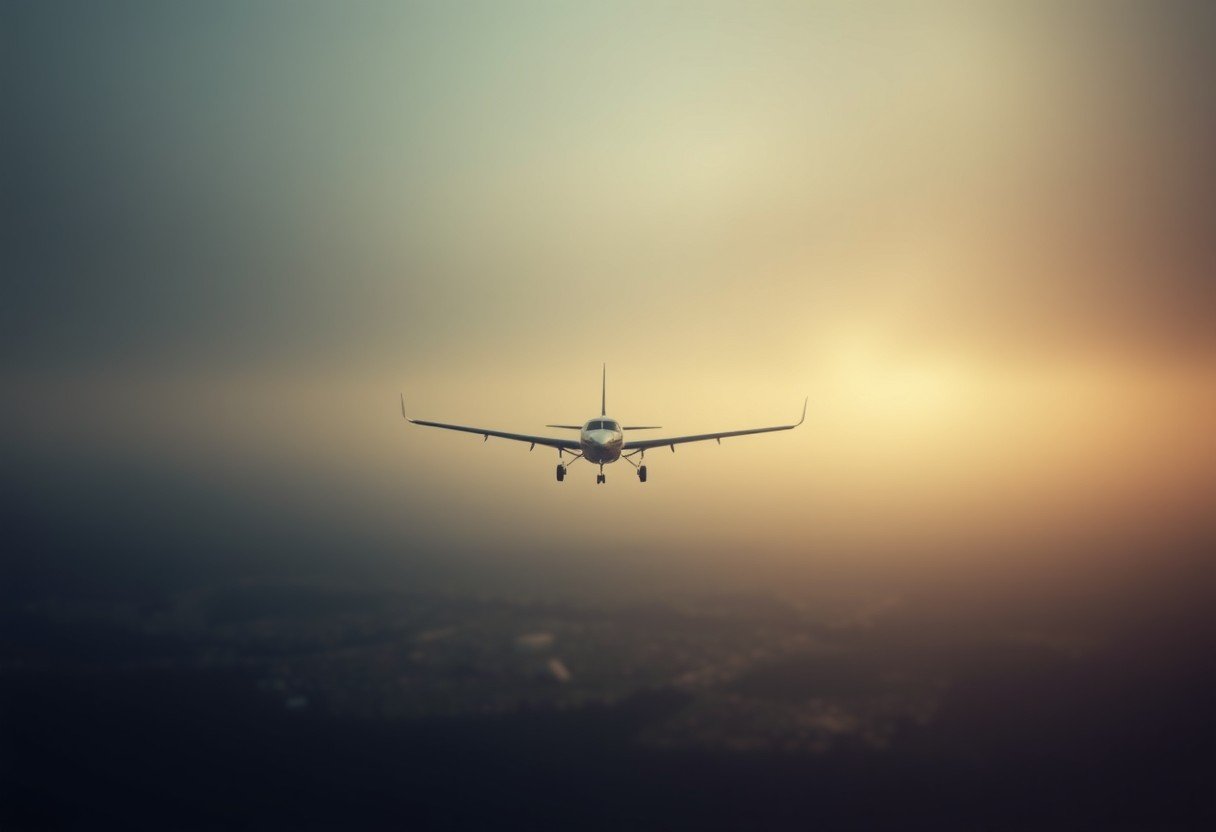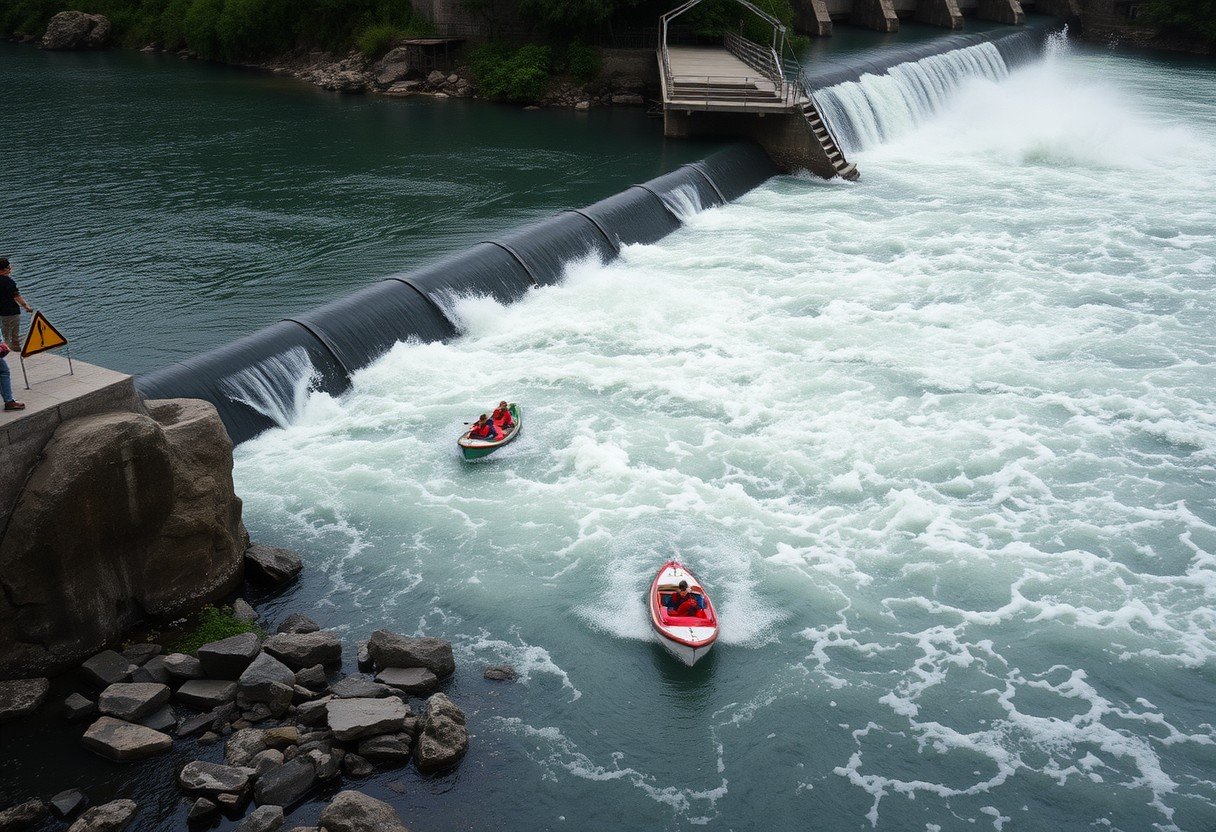Haze significantly impacts a pilot’s ability to see other aircraft and terrain, creating serious safety risks. This atmospheric condition, caused by tiny particles in the air, reduces visibility and can impair a pilot’s judgment. Understanding how haze affects flight is crucial for maintaining situational awareness, making informed decisions, and ensuring a safe journey from takeoff to landing.
What is Haze and How does it Form?
Haze is an atmospheric phenomenon that reduces visibility by scattering light. It’s caused by a high concentration of extremely small, dry particles suspended in the air. Unlike fog, which is made of water droplets, haze particles are often invisible to the naked eye but collectively obscure the clarity and color of distant objects.
These particles can come from a variety of sources. Natural sources include dust, pollen, and smoke from wildfires. Human activities are also a major contributor, with urban pollution from traffic and industrial emissions being a primary cause of what is often called smog or pollution-induced haze.
Meteorological conditions play a significant role in the formation and intensity of haze. High humidity can worsen haze because water vapor clings to the particles, causing them to swell and scatter more light. Temperature inversions, where a layer of warm air traps cooler air near the ground, can also trap these particles, leading to prolonged periods of poor visibility.
The Dangers of Haze for a Pilot’s Vision
The most direct impact of haze on a pilot is a significant reduction in visibility. This makes it difficult to spot other aircraft, landmarks, and navigational aids, which are essential for safe navigation, especially when flying under Visual Flight Rules (VFR).
Haze distorts a pilot’s perception of distance, altitude, and speed. The lack of clear visual references can make the ground seem farther away than it is, leading to dangerous misjudgments during landing approaches. This visual deception increases the risk of a Controlled Flight Into Terrain (CFIT) accident, where a pilot unintentionally flies an airworthy aircraft into the ground, a mountain, or another obstacle.
When visual cues are unreliable due to haze, a pilot’s situational awareness is compromised. It becomes harder to maintain a safe distance from other aircraft, identify rising terrain, or even judge the aircraft’s orientation relative to the horizon. This is why a heavy reliance on flight instruments becomes non-negotiable in hazy conditions.
Identifying the Different Types of Haze
Recognizing the type of haze can help you anticipate its severity and behavior. Different sources create haze with unique characteristics, and understanding them is key to assessing flight conditions accurately.
The most common classifications are based on the source of the particles in the atmosphere.
| Type of Haze | Description |
|---|---|
| Meteorological Haze | Caused by moisture and atmospheric conditions. |
| Pollution-Induced Haze | Resulting from human-made pollutants. |
| Forest Fire Haze | Smoke from wildfires reducing visibility. |
| Dust Haze | Caused by particles from soil erosion. |
| Marine Layer Haze | Fog and moisture over marine environments. |
For example, pollution-induced haze is often thickest near urban and industrial centers, especially on calm days. In contrast, haze from wildfires can travel thousands of miles and affect visibility over vast regions, often at higher altitudes.
How Pilots Detect and Monitor Haze Conditions
Pilots use a combination of simple visual checks and advanced technology to detect and monitor haze. Before a flight, reviewing weather reports and air quality forecasts provides the first indication of potential visibility issues.
During flight, a pilot’s primary detection method is visual observation. By looking at distant terrain or the horizon, a pilot can gauge the extent of the haze. However, visual assessments can be subjective, which is why instrumentation is so important. Onboard sensors can provide objective data on visibility metrics.
Modern technology has greatly improved haze monitoring. Advanced tools provide real-time data that enhances a pilot’s situational awareness.
- Satellite Imagery: Satellites can track large plumes of haze, such as those from wildfires or dust storms, giving pilots a broad overview of affected areas.
- Lidar (Light Detection and Ranging): This remote sensing method uses laser light to measure the density and altitude of atmospheric particles, creating a detailed picture of haze layers.
- Enhanced Vision Systems (EVS): Some aircraft are equipped with EVS, which uses infrared sensors to “see” through haze, displaying a clearer image of terrain and runways on the pilot’s display.
These technologies allow for better flight planning and more informed decision-making when navigating through areas with reduced visibility.
Essential Safety Measures for Flying in Haze
When faced with hazy conditions, safety becomes the absolute priority. A proactive approach is necessary to mitigate the risks associated with poor visibility. The first step is always thorough pre-flight planning, which includes checking the latest weather forecasts and pilot reports (PIREPs) for visibility information along your route.
If haze is expected, pilots must be prepared to adjust their flight plan. This could mean choosing a different route, flying at a higher altitude where the air is often clearer, or planning for an instrument approach instead of a visual one. Never hesitate to delay or cancel a flight if visibility is below legal minimums or your personal comfort level.
Pilots should also undergo rigorous training for flying in low-visibility scenarios. This includes maintaining proficiency in instrument flight and practicing decision-making skills for when visual cues are lost. Establishing clear communication protocols with air traffic control is also vital for maintaining separation from other aircraft.
Navigating Regulatory Guidelines in Low Visibility
Aviation authorities like the FAA have established strict regulations to ensure safety during low-visibility conditions. These rules govern whether a pilot can fly under Visual Flight Rules (VFR) or must use Instrument Flight Rules (IFR). It is crucial for every pilot to know and adhere to these regulations.
VFR requires a certain minimum flight visibility and distance from clouds, which may not be achievable in haze. When conditions fall below VFR minimums, pilots are required to fly under IFR, relying solely on instruments for navigation and receiving separation services from air traffic control. Compliance with these safety standards is not optional; it is essential for preventing accidents.
Aviation authorities recommend that pilots exercise extreme caution and maintain heightened awareness in haze. This includes closely monitoring weather updates, being prepared to divert to an alternate airport, and using all available resources, including onboard technology and air traffic control, to enhance safety. Regular training helps pilots stay sharp and ready to manage the unique challenges that haze presents.
Frequently Asked Questions about Flying in Haze
What is the biggest risk of flying in haze?
The biggest risk is the loss of situational awareness, which can lead to mid-air collisions with other aircraft or controlled flight into terrain (CFIT) because the pilot cannot see obstacles or accurately judge altitude and distance.
How does haze affect a pilot’s ability to judge distance?
Haze scatters light and reduces contrast, making distant objects appear farther away than they actually are. This visual illusion can cause a pilot to misjudge their altitude during landing or their distance from other aircraft and terrain.
Should I fly under VFR in hazy conditions?
It is strongly advised to avoid flying under Visual Flight Rules (VFR) if haze significantly impairs visibility. Pilots must adhere to legal VFR weather minimums, and if visibility drops below those limits, the flight must be conducted under Instrument Flight Rules (IFR) or not at all.
Can flying at a higher altitude help with haze?
Yes, in many cases, flying at a higher altitude can improve visibility. Haze is often trapped in lower layers of the atmosphere by temperature inversions, so climbing above that layer can provide much clearer air and better sightlines.
What instruments are most important when flying in haze?
When flying in haze, pilots rely heavily on their flight instruments. The most critical are the attitude indicator, altimeter, vertical speed indicator, and navigation systems like GPS or VOR. For landing, an Instrument Landing System (ILS) becomes essential.







Leave a Comment